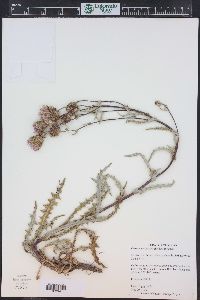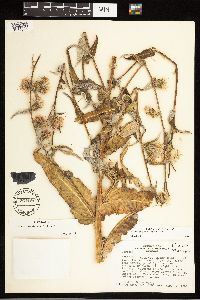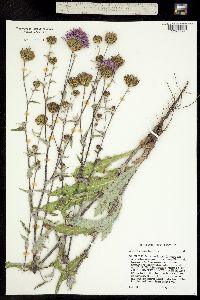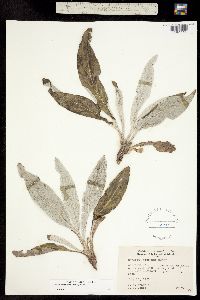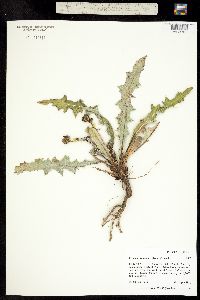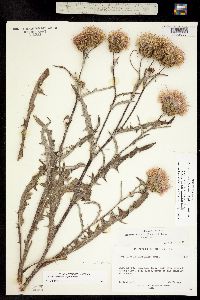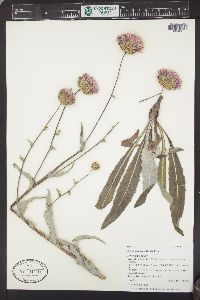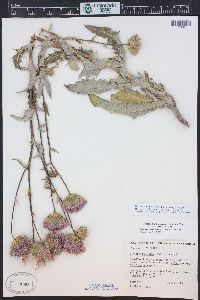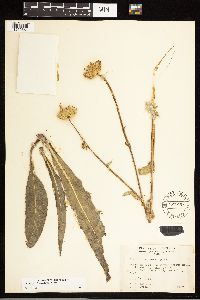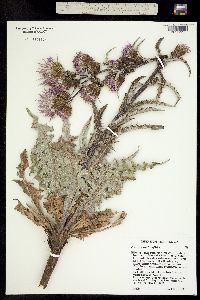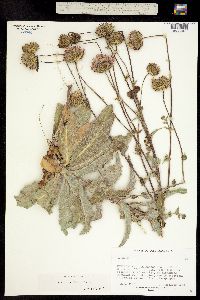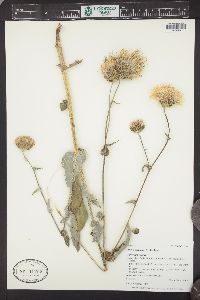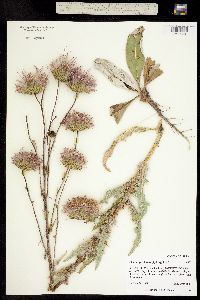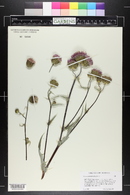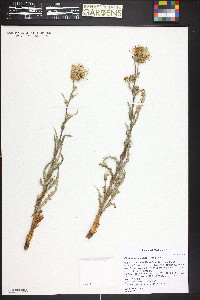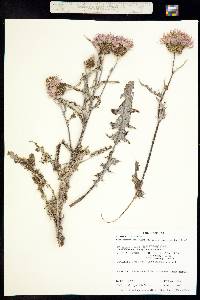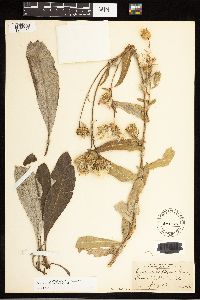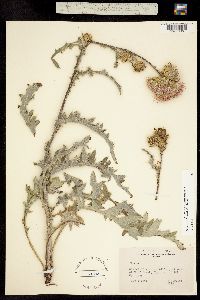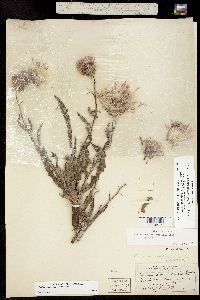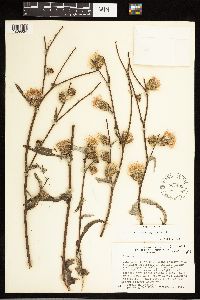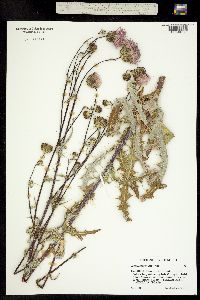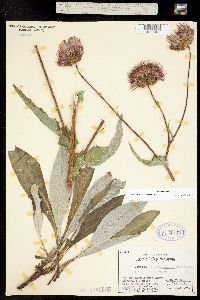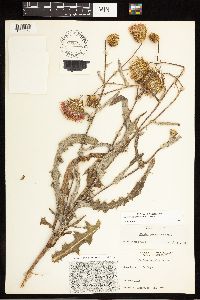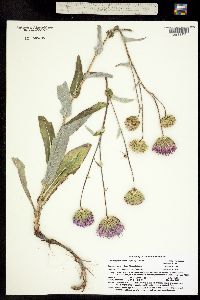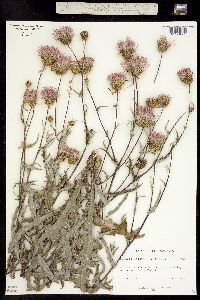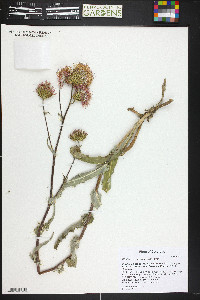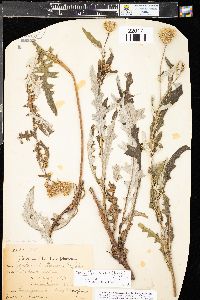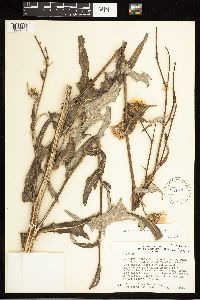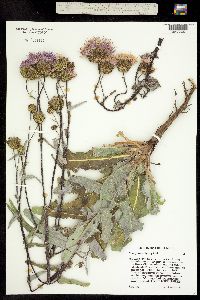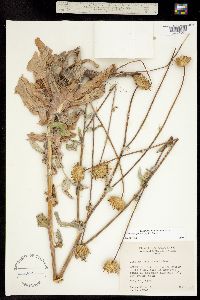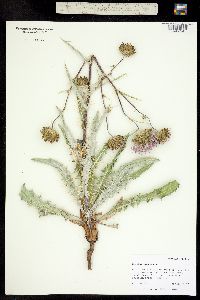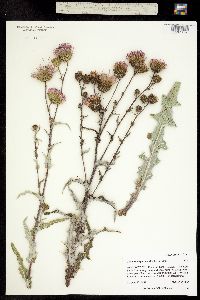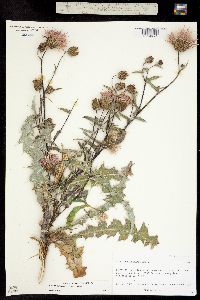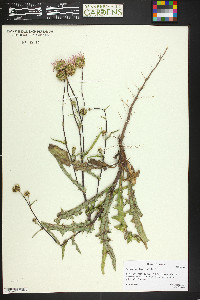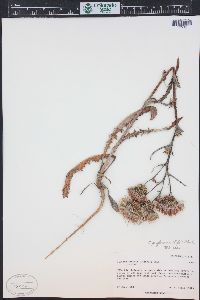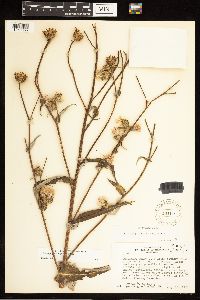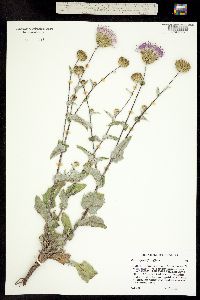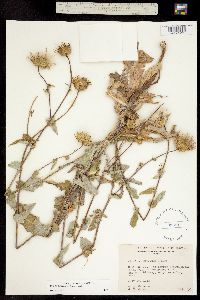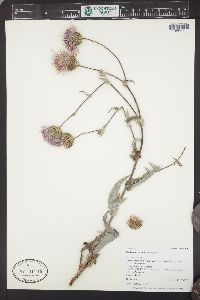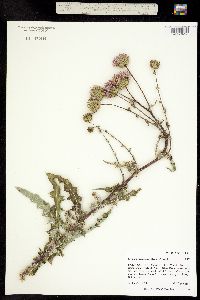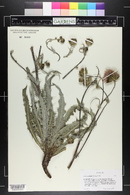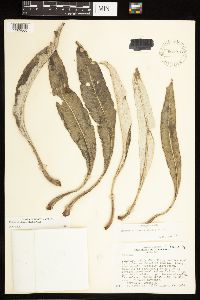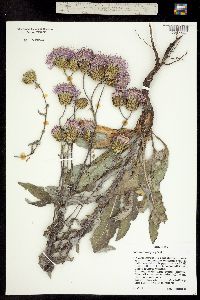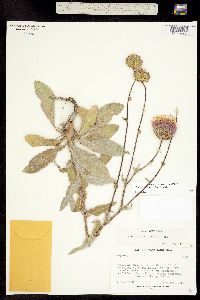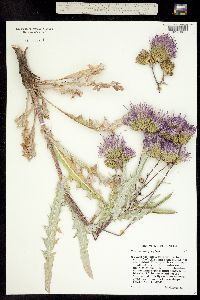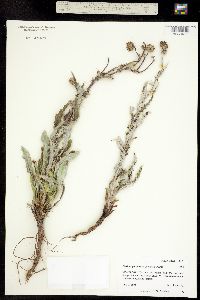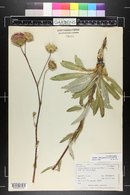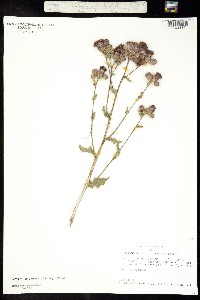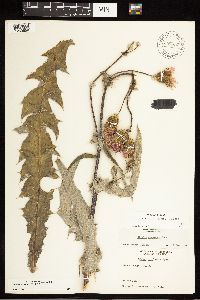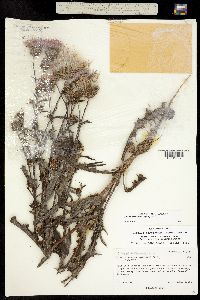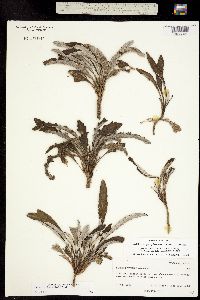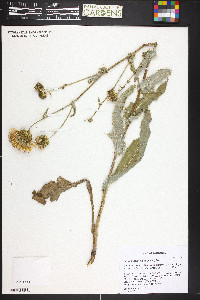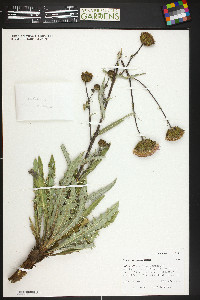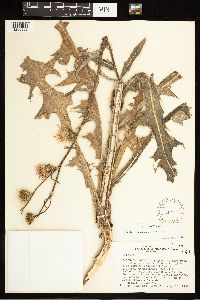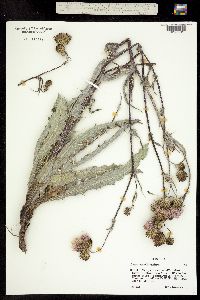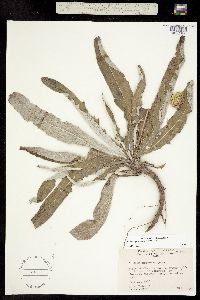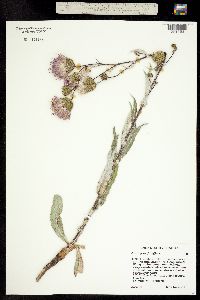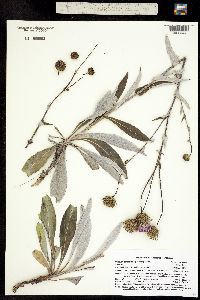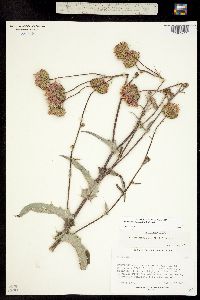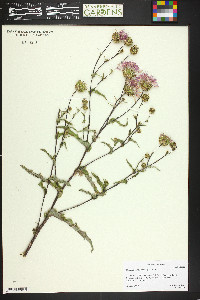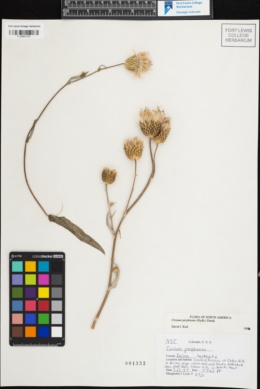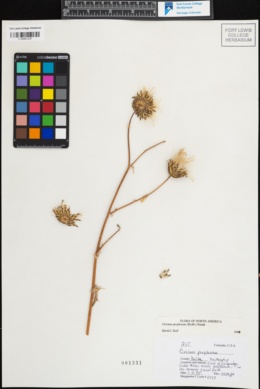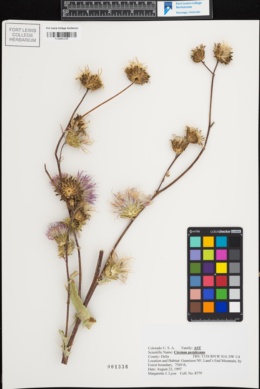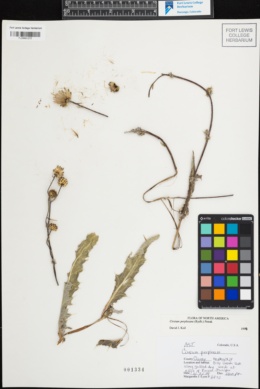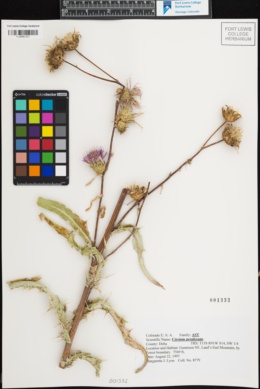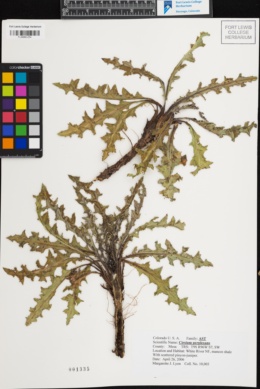
|
|
|
|
Family: Asteraceae
Rocky Mountain Thistle
|
Biennials, slender. 20-100 cm; taprooted. Stems usually 1, erect, thinly arachnoid-tomentose, sparsely pilose distally with short, jointed trichomes; branches few to many, often arising from proximal nodes, ascending. Leaves: blades oblong to elliptic, 15-30 × 2-6 cm, often unlobed and merely spinulose or spiny-dentate, sometimes pinnatifid ca. halfway to midveins, lobes separated by broad sinuses, undivided to coarsely few-dentate, main spines slender, 2-5(-10) mm, abaxial faces ± persistently thinly gray-tomentose, adaxial green, glabrous to thinly tomentose, sometimes sparsely pilose on midveins; basal sometimes present at flowering, sessile or short winged-petiolate; principal cauline sessile, progressively reduced, becoming bractlike distally, mid and distal bases broadly clasping; distal reduced to linear or lanceolate bracts. Heads few-many, in ± openly branched corymbiform or paniculiform arrays; not closely subtended by clustered leafy bracts. Peduncles (0-)3-20 cm. Involucres hemispheric to subspheric, 1.3-2.5 × (1-)1.5-2.5 cm, glabrous to loosely floccose. Phyllaries in 5-8(-10) series, strongly imbricate, green with darker green to brown subapical patch, broadly ovate or oblong (outer) to lanceolate (inner), abaxial faces with prominent to obscure glutinous ridge; outer and middle appressed, spines or terminal appendages spreading to reflexed, bodies entire or with expanded, ± scarious, ± pectinately fringed terminal appendages, tips merely mucronate or with weak spines spreading to reflexed, 1-3 mm; apices of inner often flexuous, flat, scarious, serrulate to expanded and pectinately fringed. Corollas lavender to reddish purple, (16-)19-22 mm, tubes 6-9 mm, throats 5-8 mm, lobes 5-7 mm, style tips 5-6 mm. Cypselae dark brown, 4-5 mm, apical collars stramineous or not differently colored, very narrow; pappi 15-17 mm. Flowering spring-summer (May-Aug). Barren shale hillsides, gypsiferous clay soils, open, nearly unvegetated sites in areas of pinyon-juniper woodlands, sagebrush scrub, saltbush scrub, or Gambel oak brush, roadsides; 1800-2100 m; Colo. Cirsium perplexans occurs in a few scattered sites at relatively low elevations in the Rocky Mountains of west-central Colorado. In view of this restricted distribution, the common name used by governmental agencies, Rocky Mountain thistle, is misleading; one would expect a species so named to be widely distributed in the Rocky Mountains. The name Adobe Hills thistle is descriptive of the habitat.
|
This project was made possible in part by the Institute of Museum and Library Services [MG-70-19-0057-19].
Powered by Symbiota

